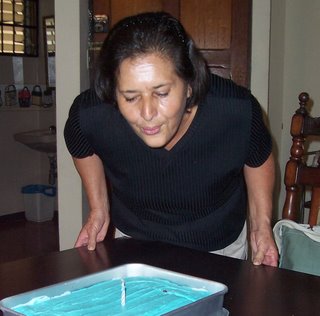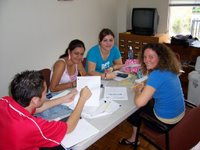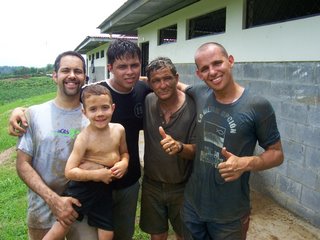 As language school students for the past year, we’ve had the benefit of taking a lot from the people around us. We’ve received 4 hours a day of lessons, we’ve stopped people along the street, in shopping malls, and in church in order to have conversations, and we’ve received advice and insight into the latin culture, but we’ve not often had the opportunity to give back. That’s why, when we have the opportunity to contribute, we feel that it is blogworthy.
As language school students for the past year, we’ve had the benefit of taking a lot from the people around us. We’ve received 4 hours a day of lessons, we’ve stopped people along the street, in shopping malls, and in church in order to have conversations, and we’ve received advice and insight into the latin culture, but we’ve not often had the opportunity to give back. That’s why, when we have the opportunity to contribute, we feel that it is blogworthy.
 This month Kelly headed up a program at CINCEL to help seniors in high school (colegio in Spanish) prepare for their math exit exams. She did interviews at the colegio in order to asses their areas of need and then was available for the past 4 weeks in order to give them the help that they needed. I also got a chance to contribute to the English program that fellow missionary Ron Marcotte has been offering to the community, I translated from English into Spanish for the beginning students during the teaching sessions and then helped as a conversation partner as each student worked on their alphabet, their numbers and various simple phrases.
This month Kelly headed up a program at CINCEL to help seniors in high school (colegio in Spanish) prepare for their math exit exams. She did interviews at the colegio in order to asses their areas of need and then was available for the past 4 weeks in order to give them the help that they needed. I also got a chance to contribute to the English program that fellow missionary Ron Marcotte has been offering to the community, I translated from English into Spanish for the beginning students during the teaching sessions and then helped as a conversation partner as each student worked on their alphabet, their numbers and various simple phrases.
I think that the most special opportunity that we had this past month was the birthday that we celebrated with our friend Mayra (pictured with the cake above). She was celebrating her 60th birthday, but with her children in Florida she was looking to spend her day completly alone. Kelly planned a small celebration with several students who knew Mayra, and Mayra was touched deeply.
It’s interesting. We’ve grown up in a consumer culture and have been bombarded with commercials about the things that we need to acquire, but the older I get (32 years and counting), the more I realize that we have been created to give. Nothing creates a better feeling of satisfaction, and nothing more positively reflects the image of Christ that so many others in our society need to see.








